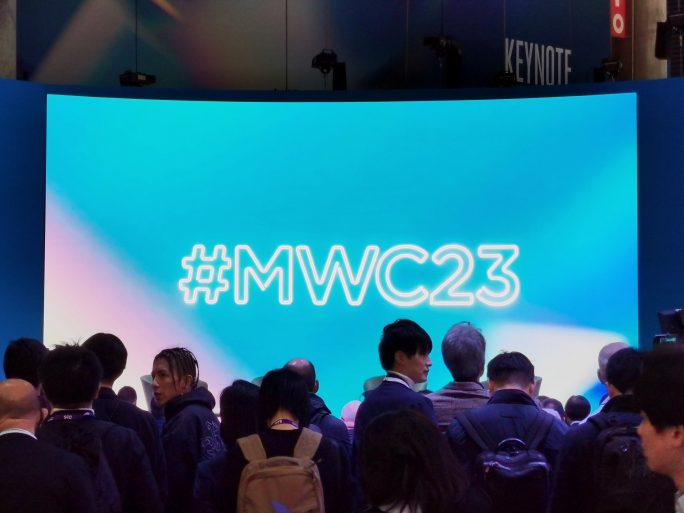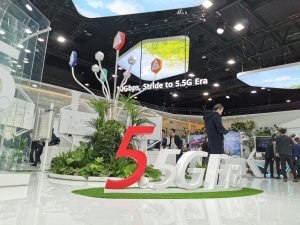Huawei’s 5.5G is Taking Shape and Will Be the Foundation for 6G

MWC23: With 5G expanding in enterprise scenarios, Huawei is already working on the new 5.5G era, which promises 10 times faster speeds (up to 10Gbps) and new lines of business for operators.
Huawei continues to develop the new generations of mobile communications. While a few months ago it began to talk about 5.5G during the Huawei Connect congress held in Paris, the Mobile World Congress 2023 has served to learn some details about the generation that will lead the way to the future 6G, scheduled for 2030.
As this happens, the manufacturer has been showing innovations in several areas that we summarize below, all of them under the common denominator of sustainability and reduction of energy consumption, as we already anticipated a few days ago.
5G private network projects doubled by 2022
Huawei has always shown an innovative character in terms of telecommunications networks. It has been a major player in the development of wireless networks for years and, despite the US veto, the market for telecom operators remains its main source of revenue beyond China. Asia, Europe, Africa and Latin America continue to support the operations of the manufacturer, which has seen 5G private network projects based on its architecture double in the last year.
![]()
Its near-term goal is to bring Gigabit everywhere, as we saw during MWC. That is, 1 Gbps download speeds can be achieved from any device thanks to 5G. To achieve this, it is necessary to inject high doses of automation and network monitoring to get the most out of the investments made by operators, in addition to being able to “serve” more bits with the lowest possible energy consumption.
In this sense, one of Huawei’s objectives is to ensure that its infrastructure is fully efficient when it is not in use so that no energy is consumed if the hardware is inactive. This is what the company calls “zero bit, zero watt”.
At its MWC booth (the largest since it has been present at the congress) the company has shown how its technology enables private 5G networks to be deployed both outdoors and indoors, capable of increasing coverage and using less power in the same range, which, according to its calculations, can lead to savings of 30%. These are enterprise applications that have evolved significantly over the past two years since 5G will begin to be deployed commercially.
This year, Huawei has shown two interesting variations of it: Wide Area Private Network (public 5G network with private use to ensure bandwidth to customers) and Campus Private Network (construction of private 5G networks for industrial environments).
In this way and under the offer available at Huawei, it is possible to combine and integrate 5G with optical and IP networks for unified and planned management.
This technology can be deployed at the campus level, including WiFi IoT and other technologies. As a result of these deployments, Huawei ensures a significant reduction in the complexity of deployment and management processes.
Finally, Huawei is also working with partners and customers to deploy 5G where fiber cannot reach, securing content and services from operators for end users that were previously not possible.
5.5G, on the way
As we mentioned in previous lines and in the headline of this article, Huawei is at the forefront of the generation straddling 5G and 6G. In fact, the company claims that 5.5G will be the basis for 6G, a standard that is beginning to show some remnants of what it will enable back in 2030 when it enters its commercial stage.
As this happens, 5.5G, which is at a very advanced stage of standardization, could also be commercially available by 2025 and will enable speeds of 10Gbps, which is 10 times faster than 5G. It is also intended that latency will be further reduced, perhaps the most important parameter in the services to which 5.5G will be dedicated.

This standard is also being designed so that passive (battery-less) IoT devices can be manufactured, which would allow the spectrum of deployments in any area to be greatly expanded or networks to be used with a huge array of sensors.
Sustainability is also another key component of what Huawei calls the new ‘5.5G Era’: this infrastructure could be 10 times more efficient because it consumes less energy and generates fewer CO2 emissions for each Terabyte of data transmitted.
As for the services that this standard will allow to deploy, the company highlights 3D applications, virtual reality games at 24K, 3D video without glasses, and any kind of immersive experience such as those promised by the Metaverse.
Of course, cloud applications will enter a phase that will create new business opportunities for companies seeking real-time and reliable services for users, but also internal connectivity between the multicolored cloud and the nodes located at the edges of the networks. In these areas, data activity and transmission will multiply exponentially over the next few years, so it is necessary for the network infrastructure to be prepared for such demand. And Huawei is delivering it.